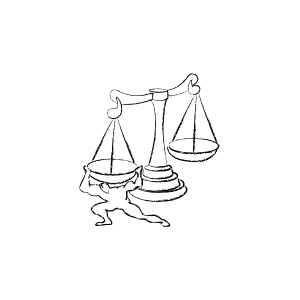NLRB's Election Procedure Rule wins big in D.C. District Court
The latest is also the greatest news so far for the NLRB's new election procedure rules. The D.C. District court issued a very strong decision completely vindicating the rule, and even chastizing the lawyers for the Chamber of Commerce for their disingenuous arguments.
I think this opinion is going to cause a re-thinking of briefing strategy in the posh halls of Morgan Lewis. Money quotes from the Court's decision include: the Chamber plaintiffs’ press release of a complaint,
the component parts [of the rule] have been inaccurately portrayed [by the Chamber],
and my favorite, which deserves a fuller excerpt to appreciate:
[The Chamber] rel[ies] heavily on the repetition of disparaging labels, referring to the Final Rule as the'ambush’ or ‘quickie’ election rulethat compels employees to‘vote now, understand later.’Chamber Mot. at 1, quoting 79 Fed. Reg. at 74,430 (dissent). This tendency to speak in broad terms continued well into the parties’ lengthy, but often nebulous, memoranda. Faced with this lack of specificity, the Court struggled at oral argument to get counsel to identify which provisions of the Final Rule violated which provisions of the NLRA or the Constitution and how. Counsel resisted being pinned down, insisting that the analysis should be conducted at the 30,000 foot level. This may be because when one descends to the level of the particular, the provisions at issue are not quite as described. On its face, the Final Rule does not necessarily lead to the outcomes to which plaintiffs object, because it accords the Board’s regional directors considerable discretion to apply its provisions in a manner that is appropriate to individual circumstances.
The Board's rule, and the procedure used to follow it, manifest a very close focus on particulars. The hearing was held in eight panels on each set of changes impacting each part of the process, and the final rule issued with a list of 25 discrete changes which were analyzed independently. The Board was emphatic that each change was addressed to a different, discrete problem, and that the rule must be understood that way. There is no overarching story
or goal or agenda here, this is a collection of largely technical fixes to particular problems.
The district court's decision is a very clear vindication of this framing - both as fact, and as sound litigation strategy for defending the rule - by repudiating the efforts of the Chamber to cast the rule as one big conspiracy for quicky elections.
As an APA plaintiff, when the judge doesn't even know what rule provision you're arguing violates what statute, you know your messaging has completely failed. That's what happened to the Chamber here, and that's good news for the rule.
If you need more background you've come to the right place:
- Complete text of D.C. Dist., Judge Jackson's opinion, 7/29/2015
- NLRB Election Rule Wins in Texas District Court, 6/1/2015
- Complete text of the prior decision by Judge Pitman upholding the rule, 6/1/2015
- NLRB's new election rule going into effect today! - 4/15/2015
- Obama Vetoes NLRB Election Procedure Rule CRA Challenge - 4/2/2015
- ALSO RELATED: Voting Unions and Democracy at Work - 3/24/2015



Pursuant to MRPC 7.4(a)(2) FREE BACKGROUND INFORMATION AVAILABLE UPON REQUEST
This site is for general information only, and creates no attorney-client relationship. Sending inquiries to the firm does not create an attorney-client relationship. By calling or emailing the firm, you are consenting to receive return calls, emails, mailings and text messages from the firm.
To get legal advice about an employment law, labor law, federal employee law, whistleblower protection, labor unions, worker cooperatives, immigration, discrimination, harassment, wrongful termination, severance, or any related question, you must first have a conflicts check by the firm. We represent exclusively workers, worker cooperatives and unions, but we still must check for potential conflicts of interest, for example, between a supervisor and employee.
First provide the firm with your name, and the name of the person you are making claims against. This allows the firm to check for such conflicts of interest. Until you receive confirmation that there is NO CONFLICT, none of the information you provide will be considered confidential. Do NOT provide any confidential information before we have asked you to do so.
Once we have confirmed there is no conflict, you may discuss your matter with staff in a little more detail, and, if requested, make an appointment. If at your appointment the firm accepts you as a client in writing, then the attorney will be able to provide you with employment law advice.
.
.
.